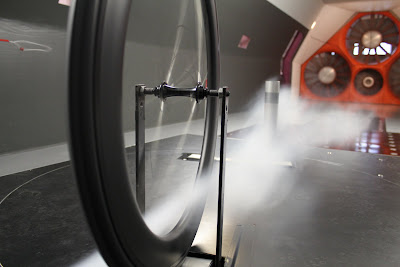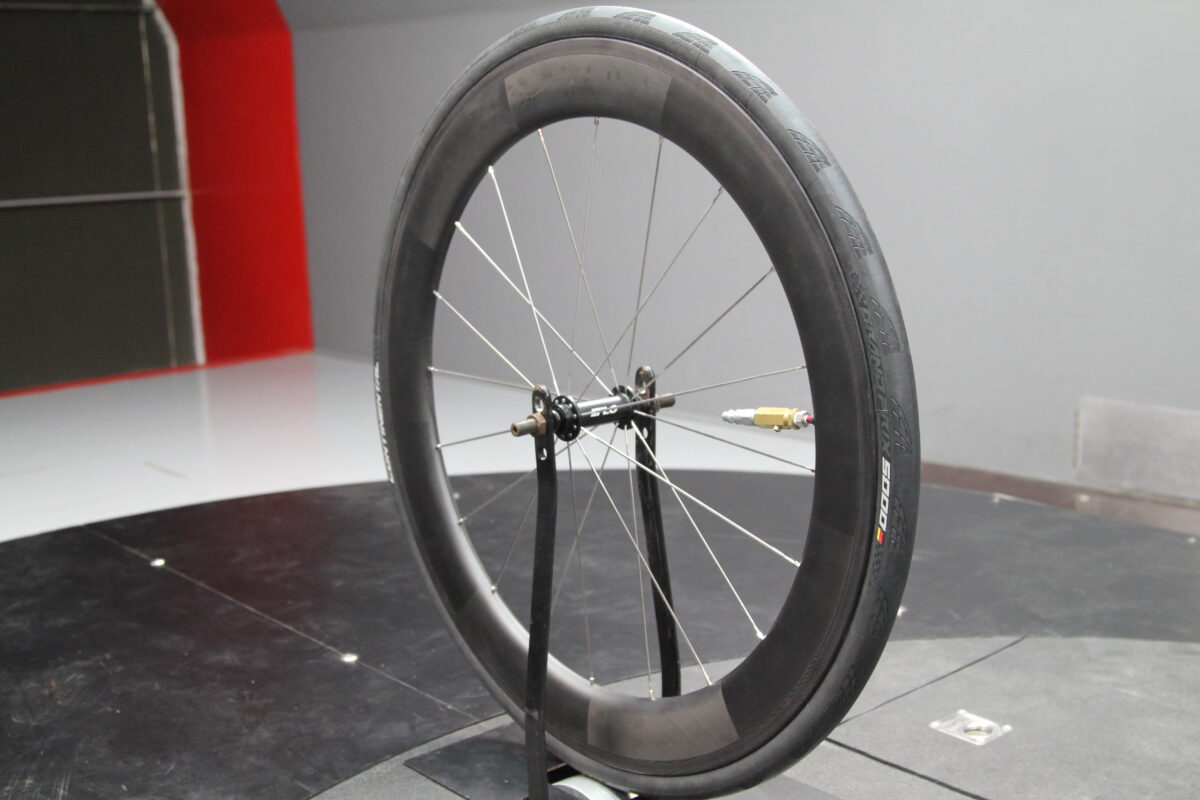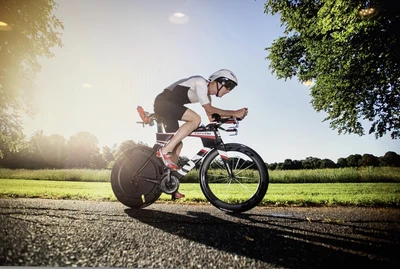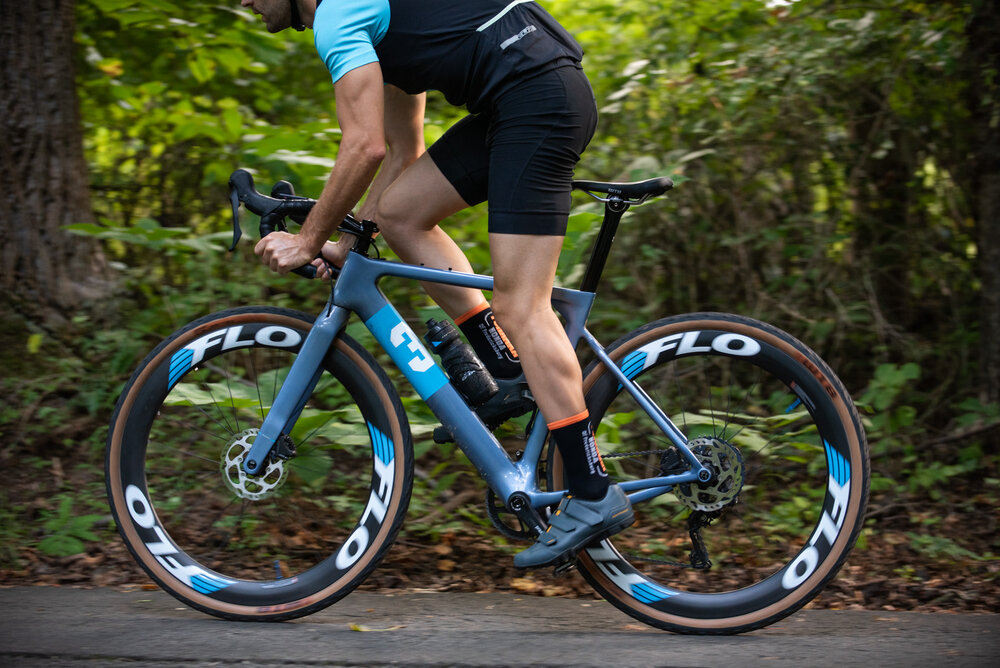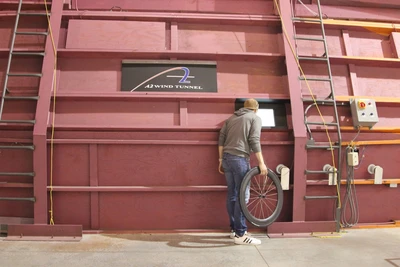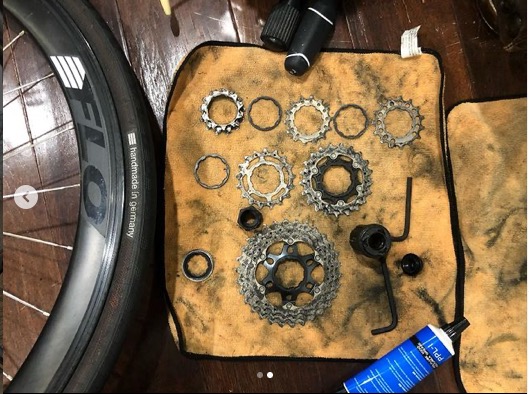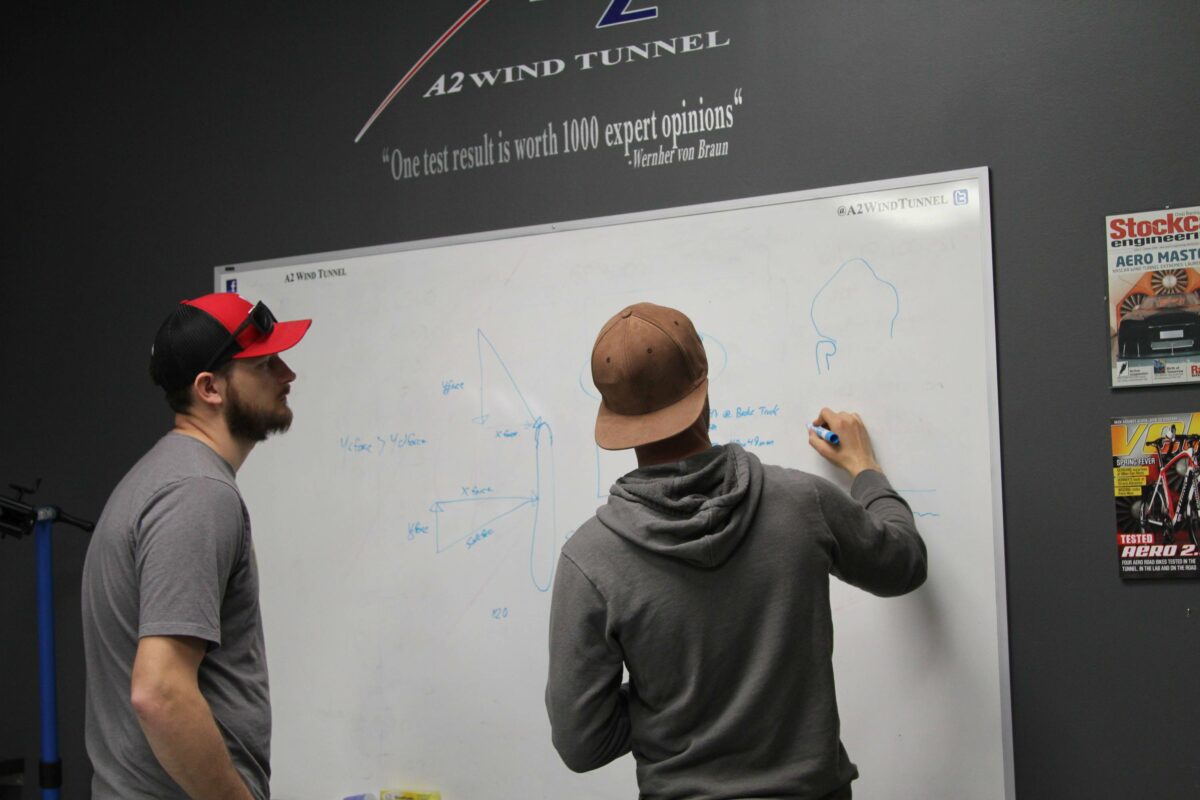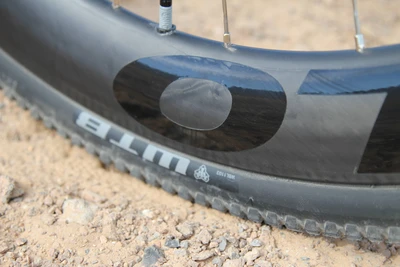
If you’ve been a cyclist for any amount of time, you’ve seen both professional and amateur riders on high-end bikes with deep-rimmed wheels. Perhaps you’ve looked at their wheelsets with envy, or maybe you already have carbon wheels and simply have questions or are considering an upgrade. We’ve created this comprehensive guide to answer frequently asked questions about carbon bike wheels. This guide will help you make a wise decision if you choose to upgrade your bicycle’s wheels.
Why do bike wheels matter so much?
Your bike’s wheels are probably the most important part of your bike. They are constantly rotating and the only contact point you have with the ground when riding. Because of this, they have a large effect on your cycling performance, safety, and comfort.
Background & History of Carbon Wheels
What is carbon fiber?
Carbon fiber originated in the aerospace industry. It is made of loose fibers composed of carbon atoms that are then suspended in resin to create a solid material. Carbon fibers or carbon fibres are fibers about 5 to 10 micrometers in diameter and composed mostly of carbon atoms. Carbon fibers have several advantages including high stiffness, high tensile strength, low weight, high chemical resistance, high temperature tolerance and low thermal expansion.
How is a carbon fiber wheel made?
Carbon fiber rims are made of two components; carbon fiber and epoxy resin. When molding a carbon fiber wheel, pieces of pre-preg carbon fiber are laid into molds. Pre-preg is raw carbon fiber that is impregnated with an epoxy resin. Prior to the invention of pre-preg, raw carbon fiber was laid in place and epoxy resin was applied over the carbon fiber, which was a messy and difficult process. Pre-preg makes for a much cleaner and workable manufacturing process.
Once the pre-preg carbon is laid in the mold, it is placed in an oven where it goes through a prescribed heating cycle know as a ramp cycle. The oven with the mold starts off at a low temperature, ramps up to a set point temperature and then lowers to an exit temperature. Each stage has a predetermined time. If you were to graph the temperature over time, a ramp shape is created, hence the name ramp cycle.
When the carbon fiber exits the mold, it is a hard finished part. However, all epoxy resins have what is called a “glass transition temperature” where the hardened epoxy turns from a glass back to a liquid. When this happens, the carbon fiber object becomes soft and will fail.
Epoxy resin design and selection is critical for carbon fiber rims. Most of the myths mentioned in the opening of this article date back from when carbon rims were first being manufactured in the 90s and early 00s. At that time, epoxy resins could only handle the high temperatures needed for brake heat if they produced a brittle part. You could not find a resin that produced a durable rim that also handled handled high heat.
Today, epoxy resins have made major advancements and we can produce rims that handle high heat and are more durable than aluminum.
When was the first carbon fiber clincher made?
Lew Composites introduced the first full-carbon clincher rim in 1998. Company owner Paul Lew, an avid triathlete, wanted the same weight savings and aerodynamics that a carbon tubular could offer, but with the ease and versatility of a clincher.
When was the first carbon bike wheel used in a race?
In 1993, Heinz Obermayer and Rudolf Dierl develop a spoked wheel made of carbon, which immediately received UCI certification for pro-competition at its launch in 1994.
The Advantages of Carbon Bicycle Wheels
Are carbon bike wheels faster than alloy wheels?
If the shape and weight of an alloy wheel and carbon wheel were the same, the aerobenefit would be the same. However, it is much easier to shape carbon into the needed shape than it is a full alloy rim. Carbon fiber wheels are often faster because of the construction methods used, especially on full carbon rims. Full carbon wheels do not have a carbon and aluminum bond joint and the spokes are connected to the rim where in the aluminum + carbon wheels the carbon fairings have holes that the spokes pass through. This can allow the wheel construction to have a reduced Cda and thus, they are typically faster.
Carbon Wheels and Aerodynamics

Because carbon wheels are made with a mold, they can be produced in more complex shapes than alloy wheels. This tailoring allows for improved aerodynamics. While weight used to be king of all considerations, more recent studies show that aerodynamics play a more significant role than weight in terms of speed except when continually climbing steep gradients of 12% or greater. If you only have a short section with steep grades, aerodynamics win. A wheel’s aerodynamics is more important than weight by a factor of 60:1.
Are carbon wheels more comfortable?
Carbon fiber as a material absorbs vibration better than aluminum wheels. Additionally, the construction of a carbon wheel produces a leaf spring effect in the sidewalls of the carbon rim. This is because the spokes connect to the internal diameter of the rim. On an Aluminum + Carbon rim, the spokes pass through the fairing and connect to the aluminum rim. This does not allow for the benefits of a leaf spring.
As a result, carbon wheels are more comfortable to ride due to their lower levels of vibration.
Carbon Rims
In discussions about bike wheelsets, typically rims get the most attention. This is because the rim is very visible and has the most aerodynamic and weight impact on the performance of the carbon wheel.
There are typically two types of carbon rims. Fully carbon rims and aluminum rims with a carbon fairing.
Learn more full carbon vs. fairing rims.
There are both hooked and hookless rims.
Learn more about hooked vs. hookless Rims.
Rim Depth
The depth of a carbon rim is measured in millimeters. Most spoked carbon rims are between 30mm and 90mm deep. Manufacturers often name their wheels according to their depth. A Zipp 808 has an 80mm depth, a FLO 77 AS has a 77 mm depth, and an Enve SES 4.5 has a 45mm depth.
Deeper rims typically correspond to improved aerodynamics. This is because a deep rim produces more side force. Side force can be thought of as lift on an airplane wing or how the air interacts with a sail on a boat. Today, we’ve learned that improvements in aerodynamics is a balance of width and depth around a specific tire profile. Finding the right combination of width and depth produces a fast and stable wheel.
FLO Cycling Rim Depth
FLO offers our All Sport wheels for road and triathlon in 64mm and 77mm depths. We offer our carbon+aluminum wheels in 60mm and 90mm depths. Some people have asked us why we moved to the newer sizes in our AS wheels (aka why we don’t have a 90 in the AS model). The answer is our advance optimization algorithms have taught us that a fast wheel has the right combination of width and depth. Depth is only one component of wheel speed when optimizing it around a specific tire profile. Wheel stability is also a major consideration when designing a wheel. A deep wheel that is very unstable in the wind produces a slower athlete. Again, finding the right balance of width and depth is key.
Wind Conditions and Rim Depth
One consideration for road bikes and triathlon bikes is how they will respond to crosswinds. A direct headwind or tailwind, while affecting speed, has little effect on a bike’s handling. Crosswinds are an entirely different story. This is especially true if they are gusting. The depth of the front rim is the most crucial determinant of handling, since it is attached to a moveable fork, and, to a smaller degree, since less rider weight is over the front wheel. Since a rider’s body accounts for most of the wind resistance, riding a wheel that requires a rider’s body to come out of an optimal aero position costs the rider more in time than gained by the aero advantages of the wheel. Make sure to consider your body weight, confidence in handling, and typical weather conditions when selecting a carbon wheel, especially a front wheel.
FLO Wheels In Wind Conditions
We’ve found that almost all riders can handle our 64mm depth front wheels, and most can handle our 77mm front wheels. As an example, we have a 190 lbs. FLO Factory Team rider who earned a podium in a 12-hour Ultra race with a front FLO 64 AS and rear FLO 77 AS in Texas crosswinds that gusted at 39 mph. Almost all riders can handle our 77mm rear or disc wheels except in extremely high crosswind situations. One exception to this rule is when a rider if very small (< 5’2” and/or < 110lbs). In this situation you may consider a front FLO 49 AS to help with bike handling.
Rim Shape
Carbon rims are parabolic in shape in order to maximize aerodynamic efficiency and stability on cross winds.
Rim Width
Most road and triathlon rims are between 19mm and 28mm in width. Until the late 2000s, it was thought that the narrowest rims were the fastest. Pro’s typically rode narrow wheels and tires. Rider’s 21mm wide tires were ubiquitous in the major tours for years. But a deeper understanding of rolling resistance in tandem with aerodynamics has led to a trend in wider rims with wider tires since 2010. Wider rims also allow for more comfort, as wider rims and tires allow for lower air pressure to be used. (See the tire section below).
FLO Wheels and Rim Aerodynamics
At FLO, we’ve developed advanced optimization algorithms that we use to produce fast and stable rim shapes from an aerodynamic perspective. Our on-road work studying rolling resistance allowed us to understand that wider internal rims widths produce lower rolling resistance. We used this knowledge to develop aerodynamic rims around wide tires and wide internal rim widths to lower the aerodynamic drag and rolling resistance produced by the rim.
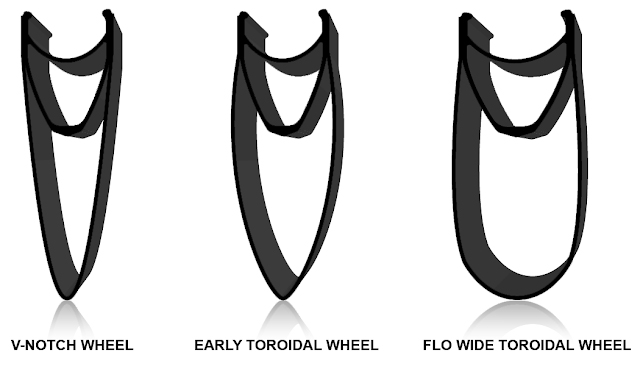
Carbon Rims and Braking Stopping Power
What is braking performance like with carbon wheels?
A huge part of racing success and safety is the ability for the rider to stop a bike effectively and efficiently. Riding in a peloton requires feathering the brakes for drafting and abrupt stops to avoid a crash ahead. Descending presents its own unique braking needs, as the fastest descenders minimize scrubbing speed, but when they need to, it’s crucial their brakes work so they don’t overshoot a turn. Even triathletes and time trialists need solid stopping power for sharp turns, road obstacles, and other occurrences.
Rim Brakes
A longtime concern about all-carbon rimmed wheels is their braking power. When rim brakes were the main type of braking system on high-end bikes and the UCI outlawed disc brakes, the concern was even greater. This is because a rim brake works by having a caliper with pads that squeezes against the surface of the rim.
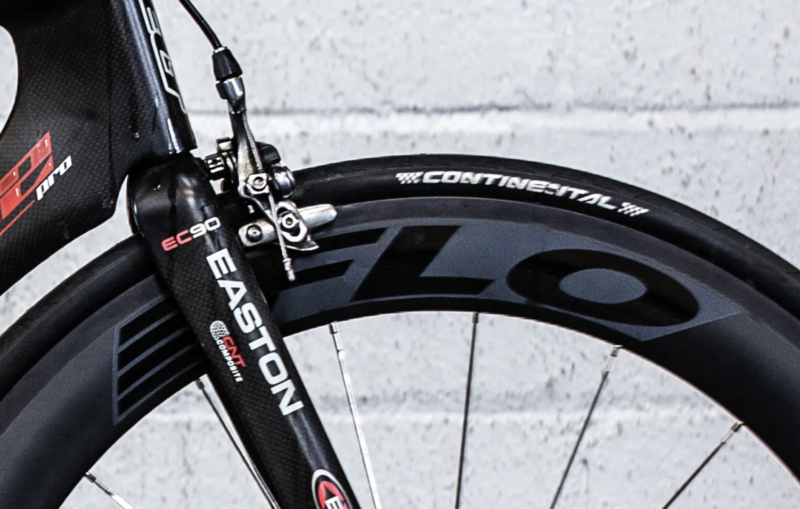
When this pad comes into contact with carbon, there is a concern about the amount of friction needed to stop and the corresponding wear and heat upon the rim. One option is to create a carbon wheel with aluminum brake to provide the pad a non-carbon contact point. This prevents wear of the brake track, but it does not fully alleviate the heat concerns. However, recent development in carbon technologies allow for all carbon rims that can be used in combination with rim brakes as long as the brake pads are specifically designed for carbon rims. This new carbon resists wear and better handles heat. Some riders, including Chris Froome and other pros, still prefer rim brakes for rapid in-competition wheel changes and fewer problems with disc brake rub because of misalignment. Rim brakes typically are shown to be more aerodynamic in wind tunnel tests, as a bonus. However, more and more bike manufactures are moving towards disc brakes, which means wheel manufacturers must follow.
Disc Brakes
The newest trend in braking allows riders to stop without a brake pad having to touch the rim. Disc brakes, instead, have a metal rotor that is at the center of the wheel, connected to the hub.
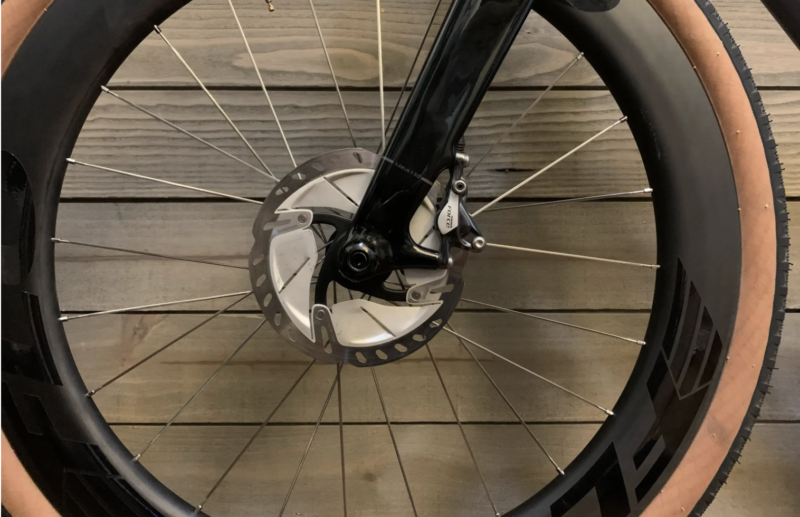
The pressure of a piston is applied to this metal disc instead of the rim surface, in order to provide braking power. This alleviates concerns about rim wear and overheating issues (see safety section below for more on rim overheating). They also stop a rider faster than a rim brake. This is especially true when conditions are wet. The UCI and other governing bodies now allow for disc brakes in competition. Disc brakes offer greater stopping power, which can be helpful on long descents, and they allow for more precise braking, making wheel lockup less likely. It’s also easier to use wider tires with disc brakes and the frame is the only limiter, not the brake caliper width capabilities.
FLO Rims and Braking
Flo makes both all-carbon and aluminum + carbon rims. We offer both rim and disc brake versions of each of our carbon models in order to serve the full-spectrum of cyclists. Whether you prefer rim or disc brakes, we have a wheel that matches your exact needs. We offer custom brake pads for use with rim brakes with our carbon wheels. We’ve developed these pads to work in harmony with our carbon for optimal stopping power in wet and dry conditions with minimal wheel wear. Each of our disc brake wheels comes ready to use with your preferred centerlock rotor.
Other Important Parts of a Carbon Wheel
Axle
The axle is fixed in place when the wheel is connected to the frame and the bearings in the hub allow the wheel to spin freely around the axle. There are two types of axles.
A quick-release axle, which allows a lever to be opened to quickly remove the wheel. These were popular for years on the cycling circuit.
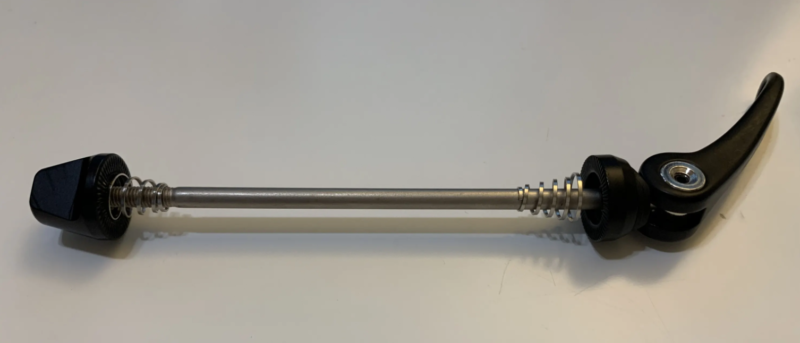
More recently, thru-axles have become popular due to their strength and usage with disc brake wheels. The thru–axle passes through the hub and threads directly into the frame of the bike, which makes the wheel secure from detaching. Thru axels are usually proprietary to the Framemaker but can accommodate multiple types of carbon wheels.
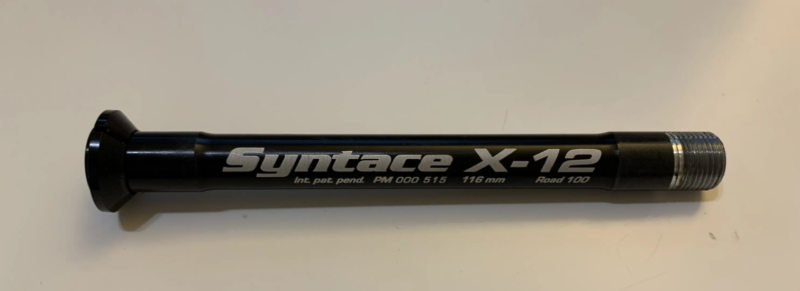
Hub
The hub is the center part of a bicycle’s front and rear wheels. A hub allows the wheel to spin around the axle. The hub contains bearings that enable the wheel to freely spin on the axle.
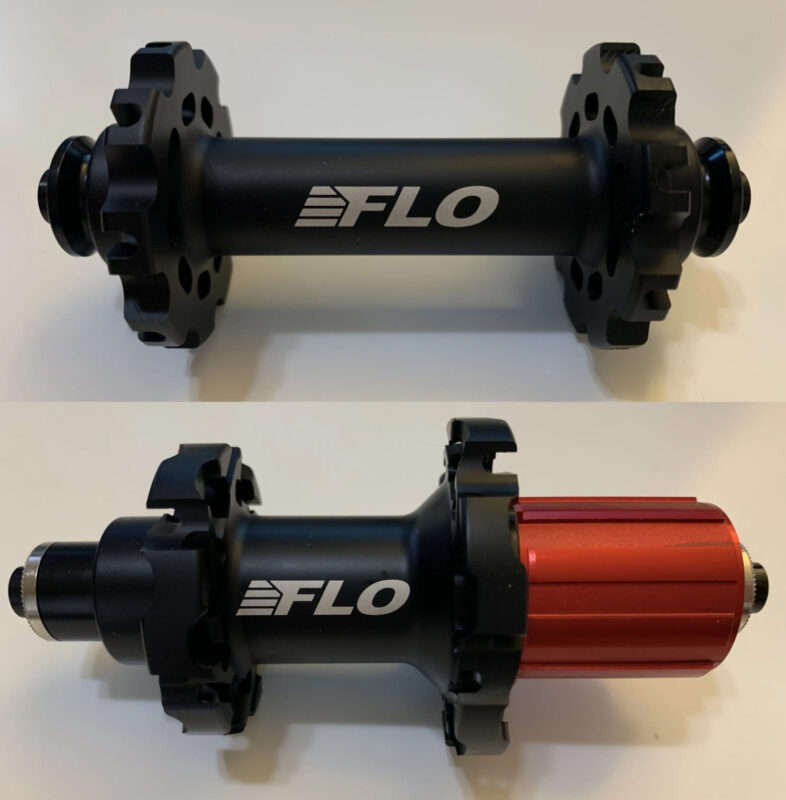
Front hub
The front wheel of a bicycle has a hub that spins freely in both directions. It is a simpler design than the rear hub. It allows the front wheel to spin equally free in both directions.
Rear Freehub
A freehub allows the cyclist to coast in a forward direction without pedaling by using a ratcheting mechanism (just like a socket set tool). The hub engages when the cyclist engages the pedal and continues to allow the wheel to rotate when the cyclist stops pedaling. Freehubs also hold a cassette of cogs also known as gears. Older bikes had 5 rear gears and two gears attached to the pedal cranks. This is where the name “10-speed” emerged as a nickname for a road bike. Today, rear cassettes have 10, 11, or even 12 cogs, allowing for a wide range of gearing options. Most road, mountain, and triathlon bikes feature freehubs.
Rear Fixed hub
A fixed hub does not allow the cyclist to coast. Often called a fixie, if the bike is moving forward then the pedals turn in relation to the speed of travel. If you’ve ever ridden a Spin Bike® in an exercise class, then you’ve experienced how a fixed hub rides. Fixed rear hubs are single gear only, meaning the rider must determine the gearing by selecting the size of the front crank cog and single rear cog. Track races in velodromes require fixed gear track bikes. There are fixed hub road races called alley cats, the Red Hook Criterium, and the last man/woman standing Rad Races on indoor go-kart tracks. Fixies are known to be the bike of choice for bike messengers and urban riders (aka hipsters), since they have fewer mechanical issues and the unique riding style deters theft.
Does a bike hub make a difference?
Yes. Any friction in the rotation of the hub reduces the speed of the wheel. Hubs use bearings consisting of two races and ball bearings to reduce friction. If dirt or grime gets past the hub seal into the ball bearing track, friction increases. If the bearings aren’t true (perfectly round) or get worn, more friction is present in the hub. This slows a cyclist down.
FLO hubs
FLO wheels use our proprietary, advanced-engineered FLO Vortex hubs.
FLO Vortex hubs have been designed with to last a long time, have low maintenance requirements, be easy to work on, and be really fast. In order to produce hubs that meet these requirements, we’ve done the following.
- Use precision machining for great tolerance and fit.
- Selected high quality components to build the hubs.
As a result of these two things our hubs are:
- Light weight.
- Low maintentance.
- Low Rolling resistance.
- Long lasting.
- Simple to work on.
Carbon Wheelset Rims and Tire Types
The tires a rider select are key to the wheel’s performance. The tires have a large effect on rolling resistance, the aero performance, and “ride” of the wheel. The days of the-thinner-the-tire-width-the-better are long gone. Matching your tire width to the manufacturer’s recommendations is crucial. The type of tire you select can also affect performance. These are the types of tires bicyclists use:
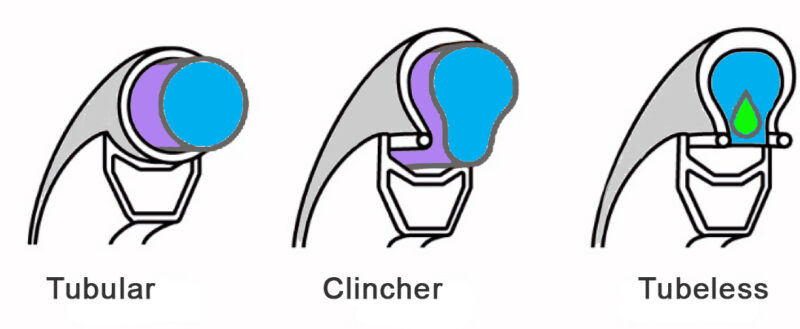
Tubular Tires
Tubular tires used to be the wheel of choice for professional cyclists. Tubular tires are like a self-contained tube that is glued onto the rim. The reason the pros liked them is if they flat, they could continue to ride a bit on them while awaiting their team car to catch up to them without damaging the rim. Replacing a flat tire on a tubular without a full wheel exchange is more time consuming. The rider must stop and glue on the new tube, and typical tubular glues take up to 24 hours to cure.
Clinchers
Unlike tubular tires, clinchers aren’t self-contained tubes. Instead they use a synthetic bead on both edges of the tire that grip onto a groove in the rim called the clincher hook. Clincher tires are much popular due to their accessibility and ease of use.
There are two types of clincher tires:
Tubed Clincher Tires
Tubed tires require a tube which contains the air pressure. If the tube gets punctured, the tire goes flat. Because there is a tube, higher pressures have to be used in order for the tube to not get pinched, which will cause a pinch-flat (aka a snakebite flat). In increase in tire pressure can lead to increased rolling resistance due to an increase in vibration passed the impedance breakpoint of the tire.
For more on impedance break point read this article.
Tubeless Clincher Tires
Tubeless tires are rapidly gaining popularity. With a tubeless tire, the rim is sealed with tape to be airtight. This means a tube is not needed to contain the air. Most tubeless tire users also use a small amount of liquid sealant in the tire. If the tire gets punctured, the air-pressure rushing out of the puncture pushes the sealant into the hole and the tire seals itself. Because of this, tubeless riders experience less flats if care is taken to replenish the sealant over time.
Tubeless tires can be run at lower pressures because there is no inner-tube in them which can be pinched. This leads to two benefits, a more comfortable ride as the less pressurized tire can lead to lower rolling resistance and improved vibration dampening. This is a more recent discovery in wheel performance. And though it is a bit counter-intuitive, a lower pressured wheel can offer lower roller resistance. (Learn more about rolling resistance).
FLO tire recommendations
FLO Cycling’s wheels are each designed with a recommended range of road tires + widths and air pressure levels, as well as gravel tire widths and pressures, to optimize their aerodynamic and rolling resistance benefits. Each of our wheel models has a user guide for optimal width and pressure based on rider weight and road surface conditions, with corresponding wattage and time savings tied to each size wheel over a 40km distance, Century, and IRONMAN® length rides.
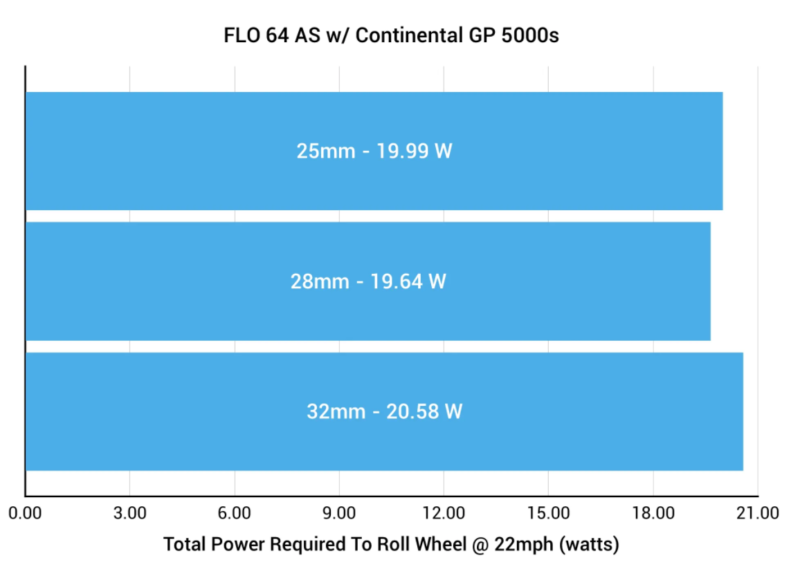
Spokes on Carbon Wheels
Spokes on a carbon wheel are made of steel, aluminum, or occasionally more exotic materials such as carbon composite or ceramics. They connect the rim to the hub. Spokes allow for a carbon wheel to be strong while lessening the weight and power cost of accelerating the wheel. Higher-end wheels have spokes that are oval shaped (aka bladed), rather than round for better aerodynamics.
Spoke Patterns
Bike wheels use various patterns of spokes. With tangential spokes, the spokes do not connect from the hub to the rim in a straight line, but at an angle. They cross over one another. Radial spokes connect the rim to the hub in a straight line. Tangential patterns are stronger than radial patterns, but radial patterns are lighter.
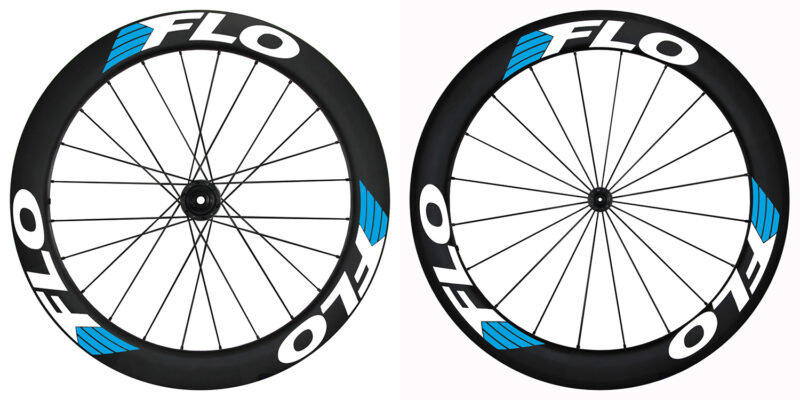
Do carbon wheels go out of true?
If you are riding your bike and notice your wheel is wobbly, the wheel may be out of true. The most common reason wheels go out of true: loose spokes. Truing a carbon rim is via the same means as any rim, you or a bike mechanic adjusts the spoke tensions to ensure the rim rotates true.
FLO Spokes
FLO spoked wheels use oval, Sapim CX-Ray spokes. Sapim states these spokes have the highest fatigue test values of any spoke on the market. Its unique flexibility and strength make the CX-Ray suitable for most high-end bicycle disciplines from gravel, to road racing to triathlon (and even downhill mountain biking). FLO use a 20-spoke radial pattern of spoke design on front wheels, and a 24-spoke two-crossed, tangential pattern on our rear wheels. This minimizes weight, improves aerodynamics, produces a dynamic responsive wheel, and maximizes strength where it is most needed.
Carbon Disc Wheel
A Short History
The invention of the disc wheel for improved performance was actually not by design. Dierl and Obermayer founded KDO GmbH. They produced disc covers for the rear wheels of bicycles to protect children’s feet from spokes. Triathletes, seeing a performance opportunity and not governed by the UCI, adapted the cover as an aerodynamic helper.
After adoption by triathletes, the first disc wheels for non-mass start races, time trials, in UCI sanctioned races first appeared in the late 1980s. The first discs used in UCI racing was Moser’s hour record wheelset in 1984.
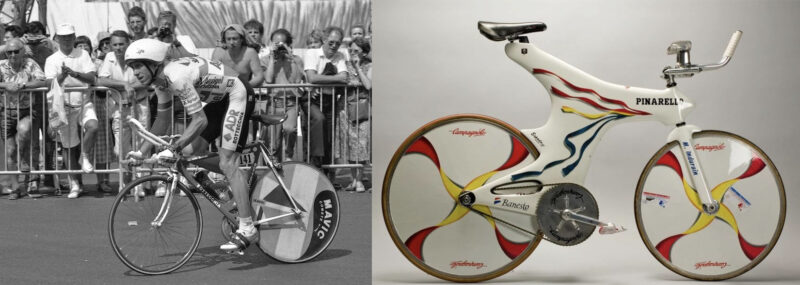
Advantages of Carbon Disc Wheels
Because a disc wheel is a solid piece from the hub to the tire, air can flow over the disk without the interruption that spokes introduce. With additional shaping, an aero disk wheel provides the most efficient power to speed ratios for the cyclist since there is less air resistance/disturbance. This improvement is not only experienced in a headwind or tailwind, but is even seen in varying YAWs (angles at which the the wind hits the rider/wheel). The disc can function as a sail at certain YAW angles, with the wheel pushing the rider forward.
One might instantly think, “I should use a disc wheel on the front and rear to be as fast as possible.” Aside from indoor velodrome usage, this would be unwise as the sail effect on the front wheel can wreak havoc on bike handling. Even when considering a rear only disc, most mass start races where the riders draft and ride in a peloton don’t allow disc usage. The predominant ride types for disc wheels are in time trialing and triathlon/duathlon. This is because there is no one in the immediate vicinity of the cyclist should a strong wind blow him or her sideways. Yet even a few of these races, such as the famed Kona IRONMAN, limit rear disk usage because of unstable crosswinds. However, most TT’s and Tri’s allow them.
FLO Disc Wheels
At FLO we produce four disc wheels. We have an Aluminum + Carbon construction and a full carbon construction. For each type we offer a rim brake and disc brake variant. FLO DISCs are spoked wheels with carbon fiber fairings. This allows to gain the benefits of a spoked wheel such a responsiveness and compliance along with the ability to shape the carbon fairings into a lenticular shape. Our lenticular shape produces a faster wheel, when compared to a flat surfaced disc wheel.
Carbon Bike Wheels and Safety
How strong are carbon wheels compared to alloy wheels?
Carbon fiber can be tougher than aluminum when the correct layup, and epoxy resins are used. This means carbon wheels can be tougher than aluminum wheels. During impact testing, our aluminum wheels sustain damage before our carbon.
What most people think of is what they see when a wheel is damaged. Aluminum normally bends and looks insignificant compared to how carbon fiber tends to have an appearance of something that has exploded. The more severe look of carbon damage has in part lead to the belief that carbon is not as tough as aluminum but this is not true.
Are carbon wheels durable?
Because of their solid tensile strength and stiffness, carbon wheels are very durable. While some people reserve a pair of wheels for racing, this isn’t necessary. You can use the same wheels for both training and racing.
Can carbon wheels fail?
While carbon wheels are incredibly strong, their one challenge is heat. Heat emerges primarily from rim breaks that stop a bike via the friction created between the brake pad and rim surface. Heavy braking down a descent causes the rim heat to rise.
The carbon in the rim is held together with an epoxy resin. If the resin heats up too much it can melt the rim. This only occurs a very high heat (typically 220ºC/430ºF). The reason for this is that carbon doesn’t dissipate heat like aluminum alloy. Today, reputable wheel companies produce rims that do not have issues with heat. Generally, they are paired with brake pads specific to the epoxy resin systems used.
This reaction to heat is one reason why disc brakes are becoming so prevalent on carbon rims. The heat is created on the metal disc surface and not the carbon rim surface. Stopping power is also increased.
FLO Wheels Built to Last

At FLO we use epoxy resins that produce tough rims that can withstand high temperatures. All of our wheels are tested to meet or exceed the ISO safety standards for brake performance. We also produce brake pads that are designed to work with our epoxy resin systems. Because of this, we are able to produce the same level of brake performance we see on our aluminum wheels.
Cycling Discipline Usages and Carbon
Carbon is used in multiple cycling disciplines including:
- Road bike wheels – Carbon is the predominant wheel medium among World Tour Riders, Continental pros, and serious amateur racers from criteriums to multi-day stage races. Their aero dynamic properties and quick acceleration are perfect for the constantly shifting pacing of road races.
- Triathlon bike wheels -Triathletes are often early adopters, especially since the triathlon federations are less restrictive about technological advances than many road cycling federations. This is true of carbon wheels. They are by far the wheels you’ll see at almost any triathlon race.
- Time Trial bike wheels – While similar to triathlon, time trialists are governed by road racing federations. All federations approve of deep profile carbon rims or disc wheels. You will rarely see a time trialist on any other type of wheel.
- Ultra Cycling bike wheels– Racers participating in these races lasting from 12/24 hours to RAAM races of 3,000+ miles value the comfort and the added speed at wattage savings of carbon constructed wheelsets.
- Gravel bike wheels-Gravel grinders are all the rage now due to the riders ability to ride away from traffic and experiencing unique scenery. Carbon wheels are newer to the gravel discipline. FLO’s G700 and G650 are leading contenders in the gravel scene, offering excellent aerodynamics, low rolling resistance, reduced vibration, better grip, strength and stability on the ever changing surface that is gravel.
Purchasing Carbon Wheelsets
How much do carbon wheels cost?
In the early years of carbon wheels, their price point made them prohibitive for many cyclists. With more efficient manufacturing methods, prices have dropped. The typical carbon fiber wheel by a reputable manufacturer costs from $599 to $3,000 per wheel.
Brands Through Distributors to Retailers
This is the classic way bicycle wheels were sold. A brand decided they wanted to make a wheel. found a manufacturer, and then used a salesman to convince bike stores to carry the product. They then created logistic and distribution networks to get their product to each bike store. Each of the layers adds a level of cost markup to the price the end-user paid. This is still the way most of the established brands operate.
Direct to Consumer Model of Wheelsets
FLO Cycling has a different model than the expensive distribution model. We sell via our website straight to you, the consumer. This allows us to create a product that is on a performance par with the big names in the industry, while not having to charge the same price as they do. There are no middle-men in the equation, meaning you get a world-class wheel without the world-class high price.
Are carbon wheels worth getting?
A carbon wheelset is a great solution for most cyclists. The benefits included more speed at less power, a lighter weight at rim depth, better handling, less vibration, stiffer for better power transfer, and a more comfortable ride. With many carbon options available and affordable, it should be one of the earliest upgrades a cyclist makes to their bike. This is especially true if your bike is a budget or mid-line bike, as most bike manufacturers use cheaper alloy rims to save on costs.
Why Flo? It’s in the Details
FLO Cycling’s wheels are engineered for maximum aerodynamic performance at multiple wind directions (wind YAW) and improved rolling resistance. FLO’s direct to consumer model allows you to purchase highly-engineered carbon wheelsets at a fraction of the price of distributer-to-retail models. We serve cyclists in a variety of sports, from triathlon, to road racing, to gravel and cyclocross. We believe we have a product that matches or exceeds the performance of our competitors in each sport category. Our co-founder, Jon Thornham is a mechanical engineer committed to developing wheel technologies through unique and ongoing research in the areas of aerodynamics, rolling resistance, and vibration analysis. Customers can order wheels from our website for delivery to any country worldwide.
Our FLO Factory Team has over 650 racers from 21 countries who fully believe in our wheels and have tested them repeatedly in the most competitive of situations. We stand behind each of our products with our integrity and a warranty. Please feel free to ask us any questions. We’d love to be of service to you.

